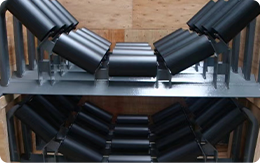 Afrikaans
Afrikaans  Albanian
Albanian  Amharic
Amharic  Arabic
Arabic  Armenian
Armenian  Azerbaijani
Azerbaijani  Basque
Basque  Belarusian
Belarusian  Bengali
Bengali  Bosnian
Bosnian  Bulgarian
Bulgarian  Catalan
Catalan  Cebuano
Cebuano  Corsican
Corsican  Croatian
Croatian  Czech
Czech  Danish
Danish  Dutch
Dutch  English
English  Esperanto
Esperanto  Estonian
Estonian  Finnish
Finnish  French
French  Frisian
Frisian  Galician
Galician  Georgian
Georgian  German
German  Greek
Greek  Gujarati
Gujarati  Haitian Creole
Haitian Creole  hausa
hausa  hawaiian
hawaiian  Hebrew
Hebrew  Hindi
Hindi  Miao
Miao  Hungarian
Hungarian  Icelandic
Icelandic  igbo
igbo  Indonesian
Indonesian  irish
irish  Italian
Italian  Japanese
Japanese  Javanese
Javanese  Kannada
Kannada  kazakh
kazakh  Khmer
Khmer  Rwandese
Rwandese  Korean
Korean  Kurdish
Kurdish  Kyrgyz
Kyrgyz  Lao
Lao  Latin
Latin  Latvian
Latvian  Lithuanian
Lithuanian  Luxembourgish
Luxembourgish  Macedonian
Macedonian  Malgashi
Malgashi  Malay
Malay  Malayalam
Malayalam  Maltese
Maltese  Maori
Maori  Marathi
Marathi  Mongolian
Mongolian  Myanmar
Myanmar  Nepali
Nepali  Norwegian
Norwegian  Norwegian
Norwegian  Occitan
Occitan  Pashto
Pashto  Persian
Persian  Polish
Polish  Portuguese
Portuguese  Punjabi
Punjabi  Romanian
Romanian  Russian
Russian  Samoan
Samoan  Scottish Gaelic
Scottish Gaelic  Serbian
Serbian  Sesotho
Sesotho  Shona
Shona  Sindhi
Sindhi  Sinhala
Sinhala  Slovak
Slovak  Slovenian
Slovenian  Somali
Somali  Spanish
Spanish  Sundanese
Sundanese  Swahili
Swahili  Swedish
Swedish  Tagalog
Tagalog  Tajik
Tajik  Tamil
Tamil  Tatar
Tatar  Telugu
Telugu  Thai
Thai  Turkish
Turkish  Turkmen
Turkmen  Ukrainian
Ukrainian  Urdu
Urdu  Uighur
Uighur  Uzbek
Uzbek  Vietnamese
Vietnamese  Welsh
Welsh  Bantu
Bantu  Yiddish
Yiddish  Yoruba
Yoruba  Zulu
Zulu Understanding the Role and Functionality of Take-Up Pulleys in Mechanical Systems and Conveyors
Understanding Take-Up Pulleys A Critical Component in Conveyor Systems
In industries ranging from mining to manufacturing, the efficiency and reliability of material handling systems are paramount. One of the unsung heroes in these systems is the take-up pulley, a crucial component that may not always be at the forefront of discussions but plays an integral role in the operational efficacy of conveyors. In this article, we will explore the functionality, benefits, and maintenance of take-up pulleys, highlighting their significance in modern industrial applications.
What is a Take-Up Pulley?
A take-up pulley is essentially a device used in conveyor systems to maintain the tension in the conveyor belt. It is typically positioned at the end of the conveyor and can either be fixed or adjustable. The primary purpose of the take-up pulley is to ensure that the belt remains tight enough to function properly without slipping, which can lead to inefficiencies or even damage to the belt and other system components.
Functionality and Importance
The take-up pulley operates in conjunction with the entire conveyor system to provide optimal belt tension. If the tension is too loose, the belt can slip over the drive pulley, leading to increased wear and tear or even costly breakdowns. Conversely, too much tension can result in premature failure of the belt or drive components. Therefore, take-up pulleys are designed to maintain an ideal balance, allowing for smooth and efficient operation.
Furthermore, take-up pulleys also play a vital role in accommodating changes in belt length due to temperature fluctuations or material loading variations. As the temperature changes, materials expand or contract, which may cause the belt to sag or tighten. The take-up pulley adjusts to these changes, ensuring that the system continues to operate without interruption.
Benefits of Take-Up Pulleys
take-up pulley

1. Enhanced Lifespan of Conveyor Belts By maintaining consistent tension, take-up pulleys help extend the lifespan of conveyor belts, thereby reducing replacement costs and downtime for businesses.
2. Improved Operational Efficiency A well-tensioned conveyor belt operates more effectively, leading to faster material handling and improved overall productivity in operations.
3. Reduced Maintenance When the tension is regulated appropriately, the strain on the entire conveyor system is minimized, resulting in lower maintenance needs and costs.
4. Safety Proper tensioning of conveyor belts is crucial for safe operation. Take-up pulleys help prevent accidents that could occur from belt slippage or failure.
Maintenance Considerations
While take-up pulleys are built to be robust, they still require regular maintenance to function effectively. This includes routine inspections for wear and tear, checking the alignment of the pulley, and ensuring that the tensioning mechanism is working correctly. Regular maintenance not only helps prevent unexpected failures but also contributes to the overall health of the conveyor system.
Conclusion
Take-up pulleys may not be the most visible component of a conveyor system, but their role is undeniably critical. They ensure that belts remain tensioned and operational, contributing significantly to the overall efficiency and safety of material handling processes. For industries looking to optimize their conveyor systems, paying attention to take-up pulley maintenance and function can lead to substantial long-term benefits. Whether you are a facility manager or an operations director, understanding the importance of take-up pulleys is key to maintaining a well-functioning and efficient conveyor system.





























